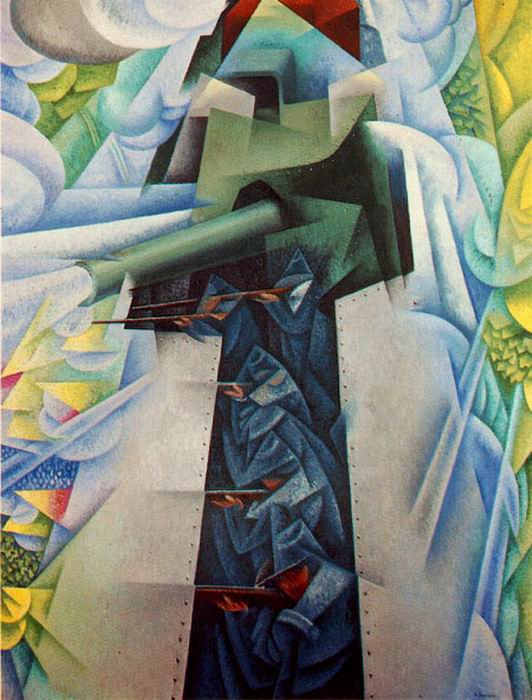The Futurism movement originated in Italy as an avant-garde art movement that took technology, speed and modernity as its inspiration. No other Modern Art faction in the annals of art history has been so bold and aggressive as the Futurism movement that rose out of the heart of Italy. Openly and piercingly these artist declared their discontentment with their modern society. They denounced traditional conventionalism demanded social changes and took liberty at pointing out all of the faults that would disband what they had viewed as a corrupt government.
Futurism came into being with the appearance of a manifesto published by the poet Filippo Marinetti on the front page of the February 20, 1909, issue of Le Figaro. It was the very first manifesto of this kind. In it Marinetti expressed a passionate loathing of everything old, especially political and artistic tradition. "We want no part of it, the past", he wrote, "we the young and strong Futurists!" Marinetti summed up the major principles of the Futurists.
He and others espoused a love of speed, technology and violence. Futurism was presented as a modernist movement celebrating the technological, future era. The car, the plane, the industrial town were representing the motion in modern life and the technological triumph of man over nature.
The Futurist painters were slow to develop a distinctive style and subject matter. In 1910 and 1911 they used the techniques of Divisionism, breaking light and color down into a field of stippled dots and stripes, which had been originally created by Giovanni Segantini and others. One of the principal exponents of Futurism, Gino Severini was an important link between French and Italian art.
